Lombok's #1 Tourism Magazine
Travellers come to the Gilis for the sun, the sea and the laid back charm of these three small islands off the northwest coast of Lombok, but by far the greatest numbers of visitors from around the world are attracted by the Gilis reputation as one of the best dive locations in South East Asia.
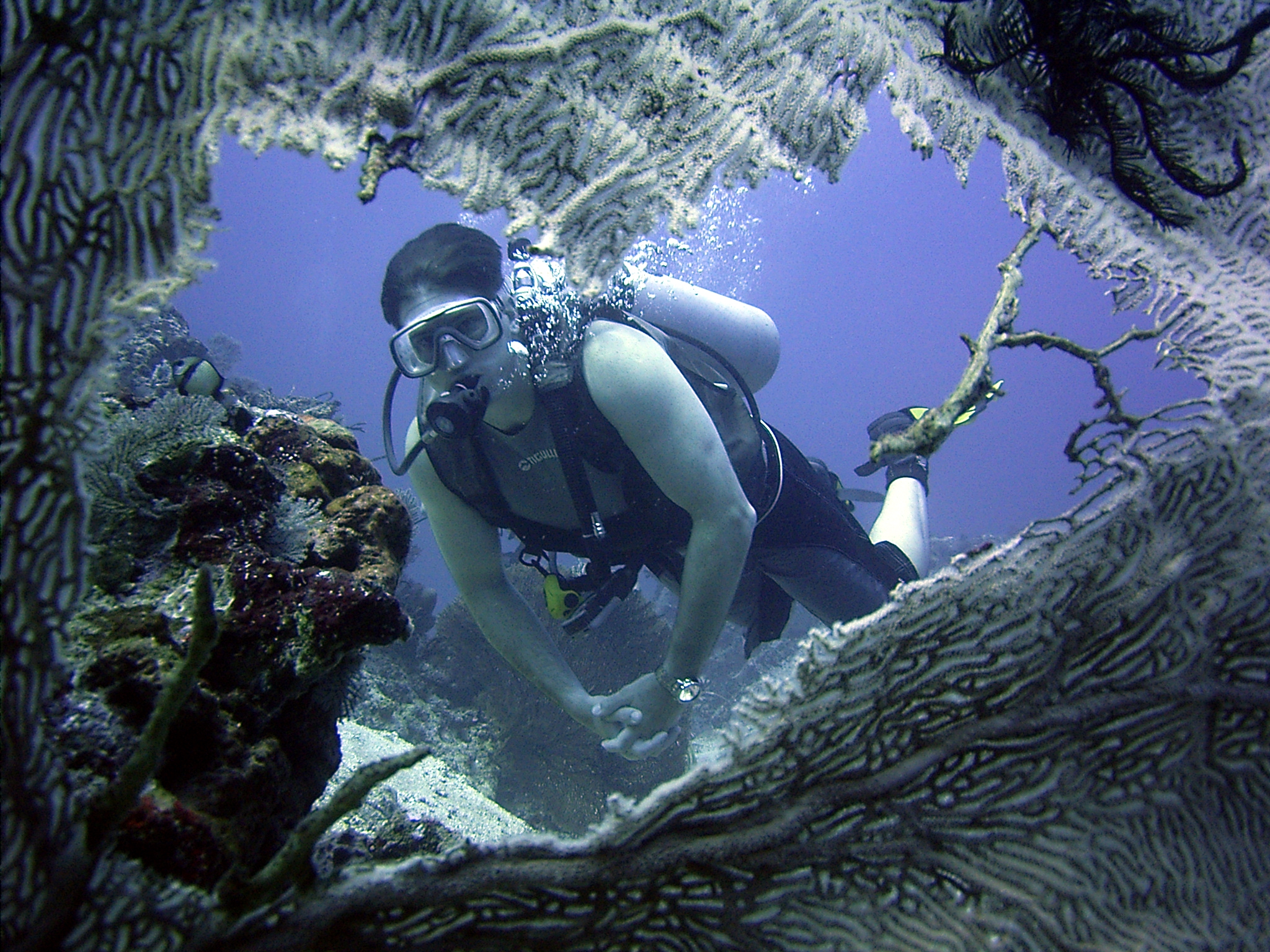
With around 25% of the world’s reefs located in Indonesia, and with over 3,500 marine species living in Indonesian waters, we have one of the richest diversities of marine life in the Indo-Pacific region. In comparison, the Great Barrier Reef has just 1,500 species and the Red Sea only 600.
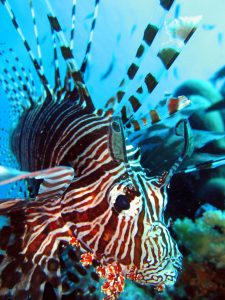 Lombok’s drop-offs, plateaus and slopes reflect a good cross-section of what Indonesia has to offer. There are currently more than 20 dive sites around the Gilis and more reefs are being explored all the time.
Lombok’s drop-offs, plateaus and slopes reflect a good cross-section of what Indonesia has to offer. There are currently more than 20 dive sites around the Gilis and more reefs are being explored all the time.
Most sites are suitable for beginners, but there are some that are more challenging for advanced divers. Some of the dive sites are shore dives; others must be reached by boat. Snorkelling is also good around the three islands.
There are many professional dive centres on the islands and many are western-operated and PADI affiliated. If you haven’t dived before, the Gilis are the perfect place to learn!
Much of the technical information in this article has been supplied by Lombok’s two largest dive operators: Dream Divers (www.dreamdivers.com) and Blue Marlin Dive, Senggigi (www.bluemarlindive.com). Please visit their websites for further information.
——————————-
Water temperature: This depends on your dive location because there are many cold currents and up-swellings. However, expect a temperature range of about 23°C (73°F) to 29°C (84°F)
Suit: 3mm shorty to 5mm wetsuit, dependent on the region you dive
Visibility: 10 – 40 metres (30 – 120 feet)
Type of diving: Reef slopes, drop offs, plateaus, caves and wrecks
Marine life: Sharks, dolphins, manta rays, turtles, morays, cuttlefish, octopus, scorpion fish, pipefish, leaf fish, angelfish etc.
——————————-
Shark Point is on the west side of Gili Trawangan and, as the name suggests, is one of the best places for finding sharks in the Gilis. The site consists of different levels (24m, 20m, 18m), and starts with a slope of hard and soft corals.

But Shark Point is not just about the sharks – the site is home to Green and Hawksbill turtles and usually some large schools of Snapper, Trevally and often Barracuda. You may also be surprised here by Devil Rays, Eagle Rays and even the occasional Manta.
Manta Point: is located off the south east of Gili Trawangan. In the rainy season, when the water is rich with plankton, this dive site gives you the best chance to see Manta Rays. Even without Mantas, you still have a good chance to see Reef Sharks and will usually find turtles, as well as some of the other big fish, like Tuna and Dog Tooth Tuna. Blue and Masked Spotted Rays are also common visitors to Manta Point and occasionally, Eagle or Bull rays.
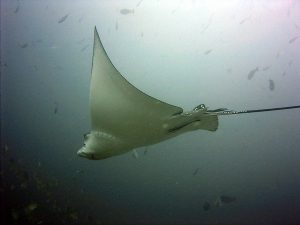
Jack Point: Located to the north west of Gili Trawangan, Jack Point is a favourite for all level of divers. Offering beautiful dives in both the deep and shallow waters, Jack Point has one of the largest diversities of any of the dive sites in the area.
Many turtles populate the shallow parts, and sharks are not a rarity on this site either. There are also a variety of Eels, Lion Fish, Scorpion Fish, Octopus, Leaf Fish, Napoleon Wrasse, Bump Heads, and much more.
Coral Fan Garden & Basket Coral Garden are two dive spots in the north of Gili Trawangan popular for morning dives. The first few metres are like being in an aquarium – schools of coloured Fairy Basslets, Fusiliers, Banner Fish and deeper, around the big coral and stone blocks, are Groupers, Batfish, Trumpet Fish, hiding Octopus and Bearded Scorpion Fish. Look out to the blue: sometimes Eagle Rays, Mantas and Reef Sharks can be seen.
Deep Turbo: A great deep dive just off the east of Gili Trawangan with spectacular topography. At 30m this site has a sandy bottom between large sea mounds, which range in size and have an interesting variety of overhangs and outcrops, the largest of which go up to about 20m.
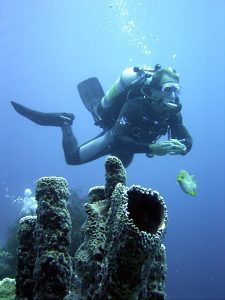
You’ll find a good variety of corals and some huge sea fans. Thousands of Garden Eels cover the sandy bottom and Barracuda, Leopard Sharks and giant rays can also be seen here.
Trawangan Slope is to the east of Gili Trawangan and is a slope, with a maximum depth of 15m, covered with cabbage, brain and leaf corals. Here you can find Moorish Idols, Yellow Margin Morays, Soldier Fish, Unicorn Fish, Emperor Fish, Long Fin Batfish, Trunk Fish, and Porcupine Fish. White Tips are also often seen passing by.
Meno Wall: A beautiful wall dive on the west of Gili Meno, consisting of 2 separate walls ranging in depth from 5 to 20 meters. Meno Wall is a dive site of many varieties and is also called “Turtle Heaven” because of the many resident Hawksbill and Green turtles.
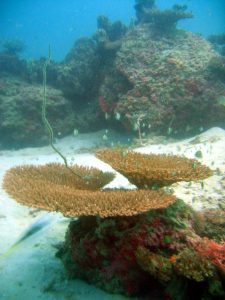
After a variety of anemone corals and reef fish, you reach the first wall, which is commonly populated by various Sweet Lips, Moorish Idols, Moray Eels, Soldier and Squirrel fish, to name but a few. Wart Slugs and Nudibranches come out of hiding and Angelfish, Butterfly Fish, Spotted Rock Cod and Clown Fish also live here. Sometimes a lone white tip is seen patrolling the wall, as are 100’s of Fusiliers.
Soft corals cover the whole reef, and there are also stony varieties such as Cabbage, Brain and Antler corals. It’s an amazing dive at night, with lots of Spanish Dancers and Lionfish.
Meno Slope: The wall between Gili Air and Gili Meno slopes from 8 meters all the way down to 30 meters. Here you’ll find both Green and Hawksbill turtles, as well as a great variety of fish including Unicorn, Trigger, Trumpet and Anemone Fish. Schools of Fusiliers and Snapper are common. In the deeper parts, you may find a White Tip patrolling the desert-like sandy areas!
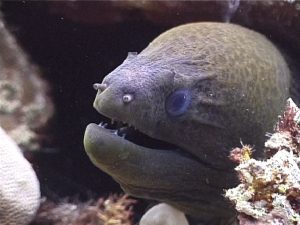
There is a very good chance of finding Pygmy Seahorses and a variety of Nudibranch and other macro species. If it is variety you are looking for, Meno Slope certainly has it!!
The Bounty is one of the more unusual dive sites in the Gilis. Located on the west of Gili Meno, Bounty is the wreckage of an old pier, with the top at around 6 meters and the deepest point at 17 meters.
During the years it has become completely overgrown with corals and now hosts a large variety of fish, including Frog Fish, Scorpion Fish and Sweet Lips. Large schools of Drum circle the wreck, and there is a great variety of macro. You also have the best changes here of seeing Eagle Rays.
Alex’s Reef (Turtle Heaven): This deep dive site (max. 30m) just above Gili Meno consists of several canyons with coral slopes. Dive over the sandy bottom, in the canyons, and over the reef. A flat, shallow area provides perfect conditions for a safety stop.
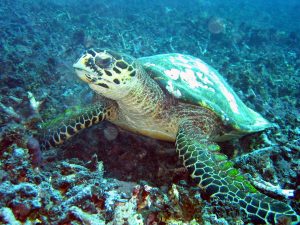
Marine life on Alex’s Reef includes colourful corals with schools of reef fish. The sandy bottom is a good hiding place for Blue Spotted Stingrays and Garden Eels. It is also called “Turtle Heaven” because of the many resident Hawksbill and Green turtles.
Simon’s Reef is a great deep dive located to the northeast of Gili Meno with a superb variety of stony corals and many soft corals not seen at other sites. Staghorn and Table corals, Star and Brain corals, Gorgonion Fans and Anemones are just a few of the many corals represented here; all are in excellent condition.
Fish life is biased toward larger reef species and schooling species. Snapper and Sweet Lips are prolific in big schools, as well as larger Parrotfish, Angelfish and Triggerfish. The site is also well populated by turtles and often impressively large Barracuda.
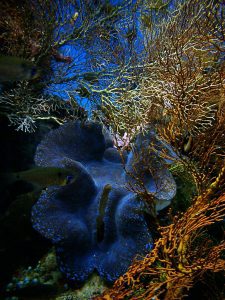
At 30m, this site has a sandy bottom between large sea mounds, which range in size and have an interesting variety of overhangs and outcrops. There are also some interesting sand bar formations, similar to sand dunes in a desert. The dive ends on a pinnacle that’s covered in marine life.
Malang Reef: Underwater canyons create the landscape here with a plateau starting at 10m and dropping down to 40m. Here you can see everything – Mantas, Blue Spotted Stingrays, Scorpion Fish, Lionfish, and White Tips have been encountered here, as well as Spiny Lobsters.
Mirko’s Reef is a dive site that is only accessible a few days per month due to current strength, but when it is accessible it provides some of the nicest corals to be found around the Gilis.
Located between Gili Meno and Gili Air, Mirko’s Reef begins on a plateau at about 10m and then slowly works its way down as far as 30m. The reef has a good mixture of fish and macro life, and is one of the sites where something unusual can appear at any time.
Air Wall: On the southeast of Gili Air, is a very varied dive site. As the name suggests this is a wall dive, ranging from 5 – 24metres. This is also one of the best drift dives around the Gili Islands.
Air is a very beautiful wall that, due to the soft coral cover, shines yellow-orange, depending on the position of the sun. Starting off on a gentle slope you, will progress to the wall via either the slope or the open sands (deeper dives).There are many overhangs and arches along the wall, filled with Glassfish, Moray Eels and sometimes Octopus.
The highlight of this wall is a coral block at 22m surrounded by Shrimp, Pipefish and thousands of Glassfish. Often you will see Bump Head Parrot Fish. On the wall itself are many macro species and a great variety of marine life. Look out into the deeper parts for White Tip Reef Sharks.
 Air Slope: West of Gili Air, this dive site slopes down to 20m, and is covered with hard and soft corals. You can expect to see lobsters, Mantis Shrimps, Stingrays, Frogfish, Box Fish, Ghost Pipefish, and even a shark or two. This is a great dive for macro photography.
Air Slope: West of Gili Air, this dive site slopes down to 20m, and is covered with hard and soft corals. You can expect to see lobsters, Mantis Shrimps, Stingrays, Frogfish, Box Fish, Ghost Pipefish, and even a shark or two. This is a great dive for macro photography.
Frogfish Point, to the east of Gili Air, is famous for macro and rarities. A huge coral block from 5 – 18m welcomes you. There are a lot of sandy areas where the Garden Eels let off steam, and corals are overgrown with Anemones and their Clownfish. You can also see Ghost Pipefish, Frogfish and a lot of Scorpion Fish. Have a manicure there by one of the many Cleaner Shrimps.
Segaluh: Nudibranch Heaven, northeast of Gili Air, has earned this name by hosting numerous different types of Nudibranch in various colours, shapes and sizes. Many different reef fish such as Angelfish, Surgeon Fish and clownfish are also frequently spotted here, as are Ribbon Eels, Mantis Shrimps and squid.
Air Harbour: Slightly south of Dream Divers lies Air Harbour: a sandy bottom that slopes down to 18 meters. A large pinnacle forms the middle point of the reef. Air Harbour is home to Crocodile Fish, Razor Fish, Seahorses and several types of Nudibranchs. A perfect site for shallow dives and for first dive experiences.
The Japanese Wreck is situated in a protected bay off the south of Gili Air. This Japanese WWII Patrol Boat is intact and is around 20m in length, covered in beautiful soft corals.
Inhabiting the wreck are many Lionfish, Stonefish and Frogfish. Around the wreck, schools of Tuna, Batfish and Barracuda are commonly seen. This site is for experienced divers and Blue Marlin Dive recommend using enriched air (Nitrox) to get the full experience at this depth.